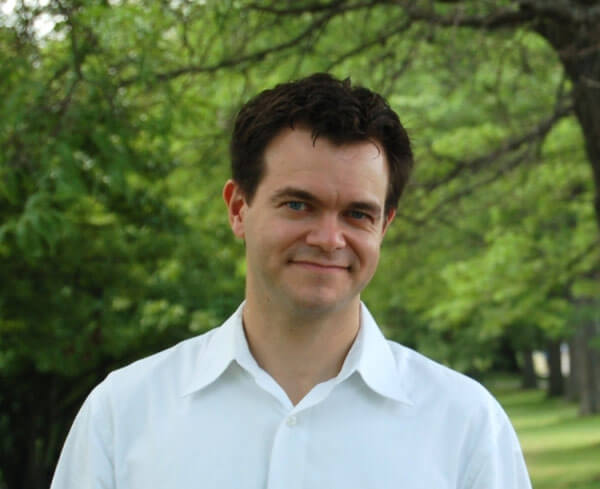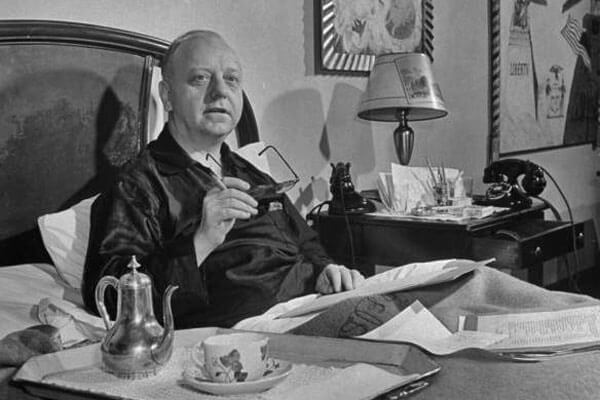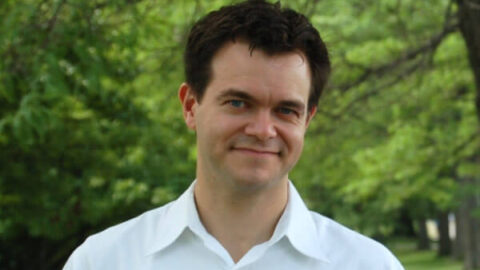Can gnarly, upmarket mid-century modernism really make nice with the populist mores of the “alt-classical” trend? What can the Williamsburg School hipsters possibly have in common with an older generation of bespectacled composition professors, whose creative paradigm they’ve seemingly rendered obsolete? Has any sense of stylistic continuity actually been preserved in American composition over the last seventy-five years, or did early minimalism — no matter the constant assertions that style no longer matters and that the Downtown/Uptown binary “is so eighties” — truly represent an irrevocable breach, separating “academic” serialism and vernacular-inspired neo-romanticism by an unbridgeable chasm? These were just some of the riddles posed by an utterly fascinating, one-of-a-kind song recital given on February 16 at the Lower East Side’s Spectrum by tenor Charles Blandy and pianist-composer Rodney Lister, where rarely-heard cycles by Virgil Thomson, Arthur Berger, and Lister himself were juxtaposed with a welcome array of newer cultivars by Stephen Feigenbaum, Jefferson Friedman, David T. Little, Nico Muhly, and Randall Woolf.

In reality, there was little conceptual weight behind the programming: unlikely as it may seem, midcentury twelve-tone and “indie classical” just happen to be two compositional styles with which Lister (the main programming force in the duo) has a deep and longstanding affinity. However, if there was one common stylistic thread that did emerge over the course of the evening to link these disparate aesthetics, it was this: a predilection for conversational, even quotidian, texts, deliberately and often surreally “mismatched” with music whose emotional character didn’t coincide with that of the words. In this sense the Thomson cycle Mostly About Love, placed first on the program, was the touchstone for everything that followed: Thomson cut his compositional teeth in the Paris of Satie and Poulenc, and he learned much from their droll brand of vocal burlesquerie. With its pervasive suggestions of middle American hymnody and its meaty, affectually variegated voice part, Mostly About Love would be an agreeable alternative to the same-old-Barber so often featured on song recitals. Blandy, sporting an appealingly colloquial tone, and Lister, who projected just the right blend of directness and understatement, certainly caught its mood ideally.

Thomson, who was extraordinarily sensitive to words (at least by composer standards), understood the problems of the voice-and-piano medium innately. By contrast, the rest of the pieces on the program represented attempts — some successful, some less so — to repurpose the art song to more contemporary forms of musical syntax. The rarely-heard Berger cycle, Five Settings of European Poets, was a sobering reminder of how little lieder was written after the establishment of Schoenberg’s twelve-tone system. Lister suggested that each of the songs was a “critical” take on a particular vocal tradition – the French mélodie, the late-romantic lieder, Italian comic opera, etc. – but to this reviewer’s ears, Berger’s extreme pointillism didn’t lend itself to pastiche of this sort. More pertinent was the second song’s gripping compositional slight-of-hand, where unremitting dissonances estranged a Rilke sonnet from its typical quaint pre-Raphaelite associations. Even better was the final Christina Rossetti song: after texts in Latin, German, French, and Italian, finally hearing English again generated a distinct sense of arrival. Not only was the song intensely affecting, including strangely moving inside-the-piano effects: here Berger came into his own, finally achieving the paradoxical lieder ideal of the voice and piano as simultaneously separate and identical entities. Blandy remained in firm control here – for serial songs, the Five Settings are actually unusually grateful for the voice – while Lister was masterful throughout in an extremely difficult keyboard part. Both are to be commended for their convincing advocacy on behalf of this little-known work. As for Lister’s own cycle, it shared many of the same strengths and flaws as the Berger: on the “cons” side, a sort of tonal grayness that didn’t entirely support the seven songs’ broad emotional trajectory; on the “pros” side, a refreshing sense of intellectual ambition — sly references were made to Adorno, Borges, and Derrida. As with the Berger, best of all was the final song, “The Disappointments of Childhood”, where a simple AABA structure gave the music a convincing, focused harmonic identity, and the words and music married most impressively.
The new songs were more of a mixed bag, though as with the other works, they were given the best possible treatment. By far the worst was a piece by Jefferson Friedman: there was so much unaccompanied recitative here that it was obvious the composer hadn’t the slightest clue how a good art song functions. Muhly’s contribution was somewhat better — typically competent, everything in its proper place — but with so many text repetitions and awkward gaps in the vocal part that the short work ultimately didn’t hold together. Randall Wolff’s “In Some Ways” was a world premiere, though you wouldn’t have known it listening to Blandy’s charismatic singing. In its own way, this song extended the Satie theme, but unlike with Monsieur le Pauvre, its musical thinness wasn’t a virtue. Stephen Feigenbaum’s “The Flatlander” was a bit dutiful — not particularly sensitive to the text, with a completely unnecessary reprise tacked on at the end — but it undoubtedly showed the most compositional potential of all the newer works: Feigenbaum is definitely one to watch. Finally, David T. Little’s “archeology”, written with verve, care, and considerable imagination, was in a class of its own. Starting out with a rapt litany of disconnected words, it evinced a cogent sense of tension and release, with a great ear for arresting sonorities. The high point was a wild climax in the piano — dispatched with ease by Lister — where the right hand veered off into what sounded like a frenzied Keith Jarrett or Bill Evans improvisation. One possible criticism of “archeology” is that it’s a bit “big” for an art song — it screams for larger treatment — but nevertheless, it leaves one eager to hear more from Little in this medium.
Blandy and Lister make an ideal pair — Blandy the typically magnetic, often witty vocalist, Lister more of the straight man. They share in common a taste for sounds off the beaten track, making them a welcome breath of fresh air on the song circuit. The two will be repeating this unique program in the coming weeks in Boston, London, and Manchester, but one can only hope that they’ll maintain the collaboration far beyond that. The dates for the upcoming concerts, well worth catching if you happen to be in town, are: March 6 at 8 PM, at the Tsai Performance Center, Boston University; March 10 at 7 PM, at the Forge in Camden, London; and March 14 at 12 PM, at the Martin Harris Centre for Music and Drama, University of Manchester.
–
Matt Mendez is an independent musicologist and critic. His personal blog is http://soundproofedblog.blogspot.com.
























